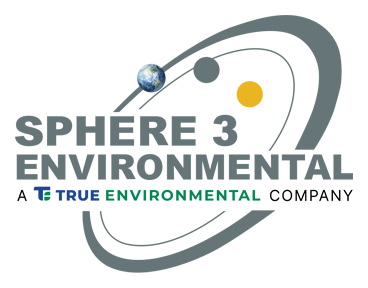The handling and storage of chemicals is conducted on a daily basis throughout various industries. These chemicals are managed in a variety of ways based on the applicable regulatory guidelines governing those specific chemicals. Our environmental scientists are well versed in the various regulations governing the handling and storage of these chemicals in a way as to mitigate their impact to the environment.
SPCC Plans
To prevent oil spills, the U.S. Environmental Protection Agency (EPA) requires owners or operators of certain oil storage facilities to prepare and implement a written and communicated plan detailing the facility’s spill prevention and control measures. EPA requires such facilities to prepare and implement a Spill Prevention, Control and Countermeasure (SPCC) plan in compliance with regulations found in 40 CFR Part 112. These regulations establish procedures, methods, equipment, and other requirements to prevent the discharge of oil from non-transportation-related onshore and offshore facilities into or upon the navigable waters of the United States or adjoining shorelines. Sphere 3 is staffed with environmental scientists trained and experienced with the requirements of 40 CFR Part 112. We can find the most cost effective way of managing your facility or facilities and tailor a SPCC plan according to your specific needs and help integrate it into your current operating practices.
Soil and Water Sampling
Soil and water, including surface water and groundwater, assessments are generally conducted when there has been a known or suspected chemical release to the environment. Our environmental scientists customize each investigation based on the specific circumstances of the release or suspected release and anticipated end use of the information by our client. A logical site-specific scope of work is developed for each situation. In order to determine what impact the release has had on different environmental media (surface water, soil, groundwater, sediment), samples of the media are collected and submitted to a laboratory for chemical analysis. The number of samples, the media sampled, and the analytical tests chosen are all dependent on the site-specific parameters. Once the samples have been analyzed, our environmental scientists compare the laboratory data to the accepted screening concentrations set forth by federal, state, and local regulations. This comparison will help define the conditions at the site and will allow our scientists to recommend the next course of action.
NORM Surveys
Naturally occurring radioactive material (NORM) is radioactive material which can be found almost everywhere. The NORM associated with oil and gas exploration and production operations originate in subsurface formations containing radioactive materials, such as uranium, thorium and their daughter products (radium 226 and radium 228). This NORM is brought to the surface in the formation water produced at well sites. Due to temperature and pressure changes, these radioactive materials co-precipitate with barium sulfate scale and this radioactive scale can build up in processing equipment. Each state has developed specific rules and regulations governing NORM. Sphere 3 has staff scientists trained to perform NORM surveys in various states. We can assess the presence of NORM on your facilities and can assist with managing your NORM compliance program.
Environmental Project Management
Sphere 3 can assist with a variety of environmental compliance projects. We will assess your needs, assist in planning, develop key tasks, manage projects, and provide agency coordination to meet your needs.
Tier II Reporting
In response to the concerns voiced by the public regarding chemical spills and their impacts on human health and the environment, Congress passed the Emergency Planning and Community Right-to-Know Act (EPCRA) in 1986, which addressed these concerns. EPCRA establishes requirements regarding emergency planning and “Community Right-to-Know reporting of hazardous and toxic chemicals. These reporting provisions help increase the public’s knowledge and access to information on the chemicals stored at individual facilities. The four major provisions of EPCRA are 1) Emergency planning; 2) Emergency release notification; 3) Hazardous chemical storage reporting requirements; and 4) Toxic chemical release inventory. Tier II Reporting is governed under the hazardous chemical storage reporting requirement provision. Section 312 of EPCRA requires facilities covered by Section 311 to submit an Emergency and Hazardous Chemical Inventory Form by March 1 of every year to the State Emergency Response Commission (SERC) or Tribal Emergency Response Commissions (TERCs), the Local Emergency Planning Committees (LEPCs) and the local fire departments. Generally, the form includes information on the chemicals stored at a facility including the name of the chemical, an estimate of the maximum amount of the chemicals present at the facility at any time during the preceding calendar year, and the general location of the chemical at the facility. Our environmental scientists are well versed in preparing Tier II Report forms for submittal to the appropriate state agencies in several states.
Landfarm Permits
Surface land disposal and treatment of certain low-toxicity wastes are common practices in the oil and gas industry. The Texas Railroad Commission (RRC) has established rules for disposal and treatment of such wastes. Landfarming allows operators to apply and mix the waste material with surface soils to promote reduction of organic constituents and dilution and attenuation of metals. Determining if a permit is required or what type of permit is required depends on the type of waste and the location of the property to be used. Sphere 3 assists clients in determining the need for a permit, completing permit applications, conducting baseline and closure sampling, and filing closure documentation with the RRC.
